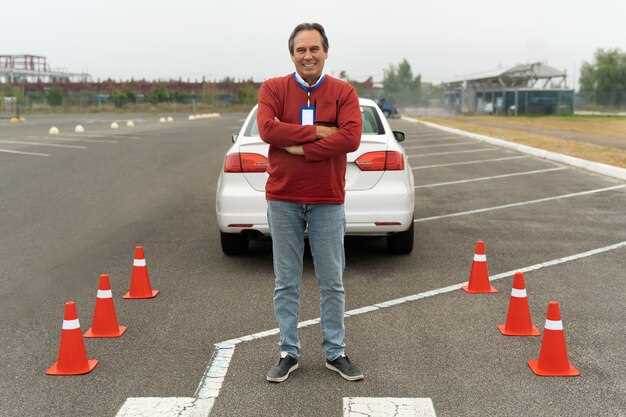
Building a track car from scratch is an exhilarating journey that combines engineering, creativity, and a passion for motorsport. Whether you’re a seasoned driver seeking to enhance your performance on the track or a DIY enthusiast eager to create a unique machine, this guide will provide you with the essential knowledge and steps required to embark on this exciting project. From selecting the right base vehicle to optimizing its performance, we will cover every aspect necessary to transform your vision into reality.
At the core of any successful track car build lies a strong understanding of your goals and preferences. Are you focusing on speed, handling, or both? This DIY adventure allows you to choose components that reflect your individual style, whether that’s lightweight materials for improved agility or a powerful engine for straight-line speed. The choices you make during the build will not only impact your car’s performance but also its overall character on the track.
Throughout this guide, we’ll delve into crucial topics such as chassis modifications, suspension tuning, and weight reduction techniques. Each section will provide detailed insights into the advantages and challenges of various options, helping you make informed decisions. By the end of this guide, you will have a comprehensive understanding of how to build a truly unique track car tailored to your desires, ensuring an unforgettable driving experience.
Choosing the Right Base Vehicle for Your Track Build
Selecting the ideal base vehicle for your track car is critical to the success of your DIY project. The right choice can significantly impact performance, handling, and overall enjoyment on the track. Start by considering your primary goals for the build. Are you aiming for a lightweight, agile machine or do you prefer a power-focused build? This decision will help narrow down your options.
Next, evaluate the weight-to-power ratio of potential vehicles. Lightweight cars, such as the Mazda MX-5 or Honda Civic, can often outperform heavier machines with more horsepower due to their superior handling. Conversely, if you prioritize sheer speed, vehicles like the Ford Mustang or Chevrolet Camaro could be more suitable due to their powerful engines.
Examine the availability of aftermarket parts and support for the model you are considering. A car with a strong enthusiast community will provide access to performance upgrades, maintenance tips, and troubleshooting advice. Popular models often have a plethora of options for suspension, brakes, and engine modifications, making your DIY build more manageable and enjoyable.
It’s also important to assess the platform’s inherent design features. Look for cars with rear-wheel drive (RWD), as they generally offer better handling characteristics on the track. Additionally, the vehicle’s chassis rigidity and suspension design will also influence your build’s overall performance. A solid chassis will provide the necessary feedback and stability during high-speed maneuvers.
Don’t forget to consider your budget. While some vehicles may tempt you with their potential, costs can escalate quickly with extensive modifications and repairs. Including initial purchase price, parts availability, and insurance costs in your calculations will ensure you select a base vehicle that aligns with your financial plans.
Lastly, test drive your top choices. Nothing beats firsthand experience when it comes to understanding a vehicle’s handling characteristics and comfort. A well-chosen base vehicle serves as the foundation for a successful track build, ultimately enhancing both your skills and your enjoyment on the track.
Essential Modifications for Improving Performance and Safety

When building your own track car from scratch, prioritizing modifications that enhance performance and safety is crucial. These adjustments will not only boost your lap times but also provide a safer driving experience.
First, upgrading the suspension system is vital. A high-performance coilover setup allows for adjustable ride height and damping settings, enabling you to fine-tune the car’s handling characteristics. This modification improves grip and stability during high-speed cornering, crucial for track performance.
Next, focus on the braking system. Swapping out factory brake components for performance rotors, calipers, and pads is essential. A dedicated performance brake setup increases stopping power and reduces brake fade during intense track sessions. Additionally, consider installing a brake cooling system to maintain optimal temperatures.
Weight reduction is another critical modification. Removing unnecessary components, such as rear seats, and using lightweight materials for body panels can significantly enhance acceleration and cornering capabilities. Additionally, a racing seat with a harness system not only saves weight but also ensures driver safety during sharp maneuvers.
Enhancing power output through upgrades like a high-performance exhaust system and ECU tuning is also beneficial. These modifications improve engine efficiency and responsiveness, allowing your car to achieve higher speeds on the track. A cold air intake can further complement these upgrades by providing improved airflow to the engine.
Furthermore, installing a roll cage significantly enhances safety. This structure protects the driver in the event of a rollover and increases the vehicle’s overall rigidity, positively impacting handling. Complementing this with a fire extinguisher and a robust safety harness ensures that you are prepared for any eventuality on the track.
Finally, tires are a fundamental aspect of any track car. Selecting the right set of performance tires tailored for track use drastically improves traction and handling. Proper tire pressure management can also enhance performance and safety, ensuring optimal grip during high-speed runs.
By focusing on these essential modifications, you can create a track car that excels in performance while prioritizing safety, transforming your DIY project into a formidable contender on the track.
Setting Up Your Car for Optimal Handling and Aerodynamics

When you embark on a DIY project to build your own track car, achieving optimal handling and aerodynamics is crucial for maximizing performance. This process involves a careful selection of components and adjustments to ensure that your vehicle can corner effectively and maintain stability at high speeds.
First, consider the suspension setup. Upgrading to aftermarket components such as coilovers can significantly improve handling by allowing you to adjust ride height and damping settings. Lowering the center of gravity enhances stability while reducing body roll during cornering. Ensure that your car’s alignment is fine-tuned, specifically the camber, caster, and toe settings, to optimize tire grip and responsiveness.
Next, focus on weight distribution. Aim to achieve a balanced distribution of weight between the front and rear axles. This balance can be modified by repositioning components, such as relocating the battery or using lighter materials for certain parts. A well-balanced car will respond more predictably to handling inputs.
Aerodynamics plays a vital role in how your car performs at speed. Implementing aero parts such as front splitters, side skirts, and rear wings can significantly reduce drag and increase downforce. Downforce enhances tire grip, allowing for faster cornering speeds. When designing your car, consider the airflow around the vehicle and the effects of various body modifications.
Additionally, ensure that your tires are suited for the conditions you will race in. Selecting the right tire compound and size can greatly contribute to grip levels. Maintaining proper tire pressure is essential, as both under-inflated and over-inflated tires can lead to unpredictable handling characteristics.
Finally, always remember to perform thorough testing after making these adjustments. Take your car to a track to assess how these changes impact handling and aerodynamics. Fine-tune settings based on your experience and feedback, as this iterative process is key to building a high-performing track car.
